OpenGL: Cinebench R15
Before we let the very hard guys out, we insert a little synthetic foot insert in the form of the OpenGL benchmark in the Cinebench package. Takt goes ahead, you don't need more than four cores here. Actually no new insight in such programs, but once again a nice transition into the realm of the working animals.
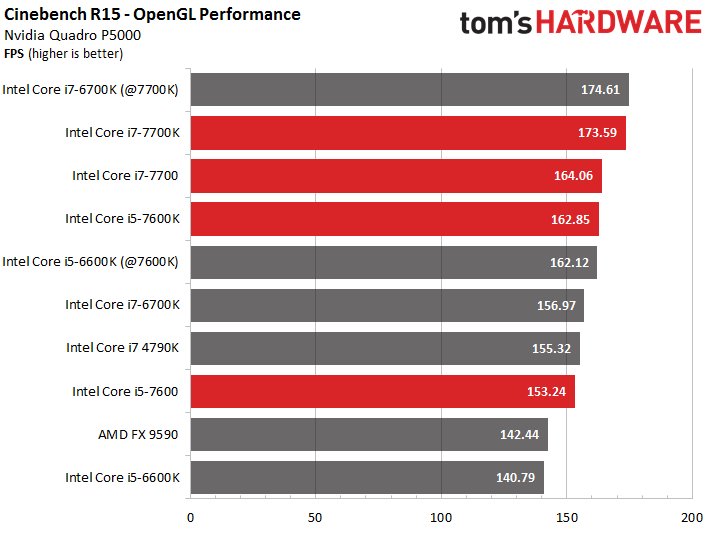
Creo 3.0
The biggest drawback of the Creo benchmark – its extremely long runtime – is also its biggest advantage. The longer a well-designed test runs, the greater the reproducibility and stability. If after one hour the results of different CPUs are still the same, the user will not be able to feel or measure any difference in daily use.
| Description | |
|---|---|
| Workflows | CPU Composite (1) I/O Composite (1) Graphic Composite (6) |
| Content | – Open, generate, close, and delete workflows – GPU and CPU-based output calculations (Tessellation, Mass Properties Analysis) – All forms of possible shading functions and movements (rotate/pan/zoom) – Use of Screen Space Ambient Occlusion (SSAO) – Bump mapping and image background support – Snapshots |
Now let's look at the three composite results of each benchmark content and start with the rated CPU performance. Again, the emulated eight threads only stand in our way; a real four-nucleus makes the job much better! At least in pure CPU scoring, but that's unfortunately only half the truth.
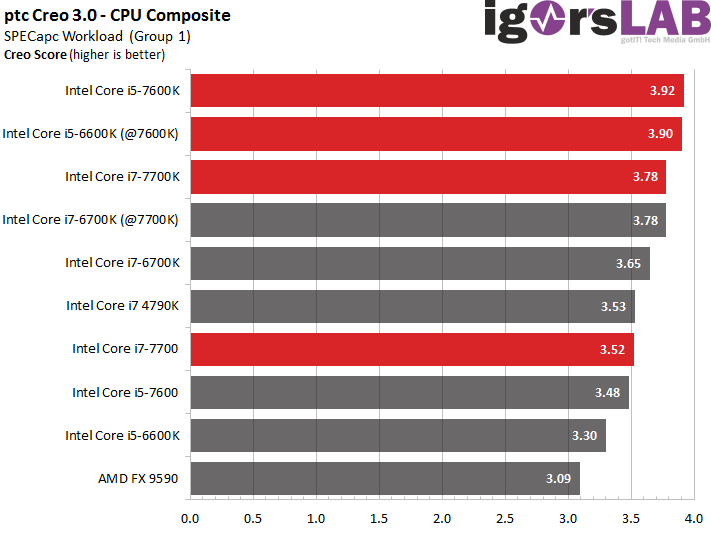
If one looks at the visible result in the form of the graphical output, then SMT steps back into the background and only the higher bar counts. This also results in Skylake and Kaby Lake being absolutely and absoluteper per core with the same clock and equivalent CPU. provide almost identical results.
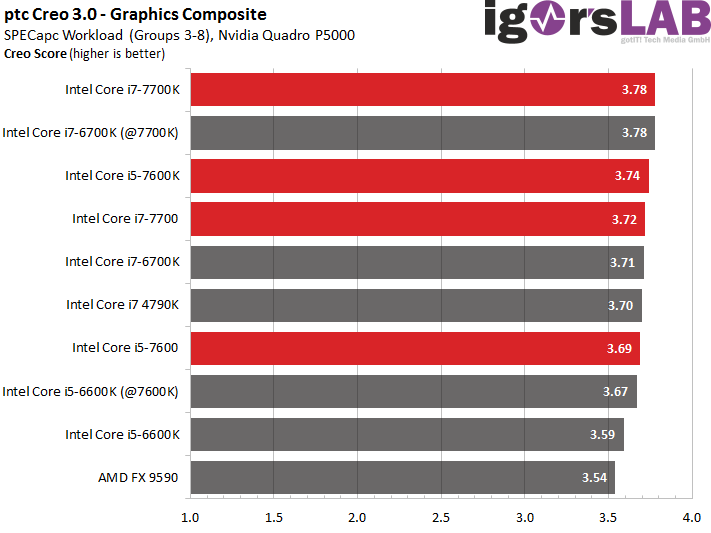
The same applies to the I/O composite, which rounds the picture well. Kaby Lake therefore only has advantages over the higher clock, whereby one really has to weigh the added value compared to possibly existing technology, so that the whole thing does not come to an expensive side-grade.
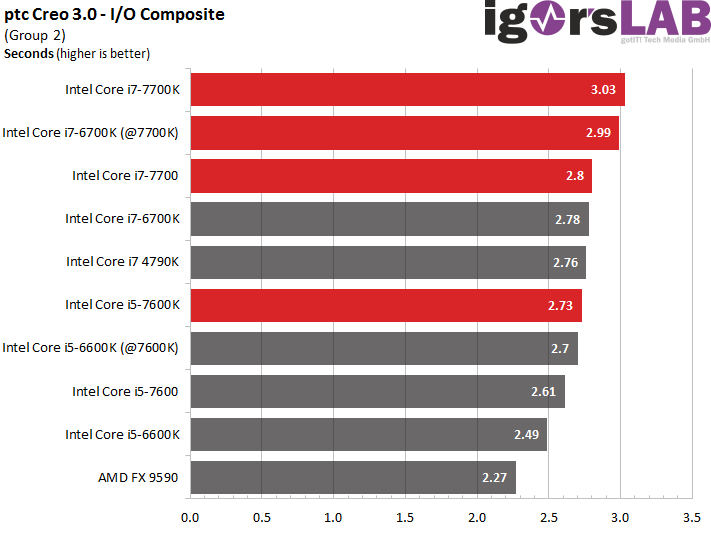
Solidworks 2016
Solidworks from Dassault Systems is also a program that is very CPU-dependent in its great functionality. Reason enough to take a closer look at this benchmark, which is also running for a very long time, because it acts like Creo 3.0 at the same time as an almost perfect stability test, in the course of which errors usually occur with manually overclocked CPUs rather than with the often used Prime95 or OCCT passes
| Description | |
|---|---|
| Workflows | CPU Composite (2 Tests) Graphic Composite (9 Tests) |
| Content | Cpu: – Tessellation – PhotoView360 Rendering Gpu: |
With the CPU composite you can see very clearly how thread count and high clock speed can give an advantage. SMT helps enormously and the expected picture results when an application can parallize reasonably well in calculations. In the concrete test, it is CPU-based tessellation and rendering.
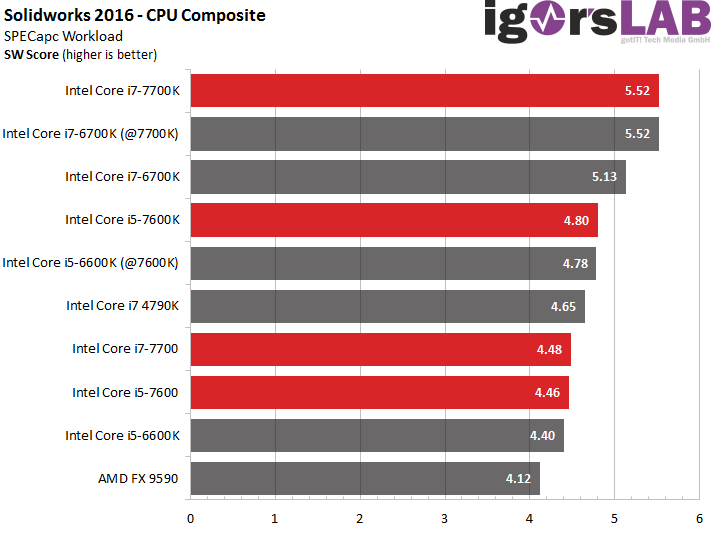
The graphics output, on the other hand, primarily benefits from the clock and thus also from the IPC performance of the CPU used. So, of course, the comparison between Kaby Lake and Skylake at the same time is worthwhile.
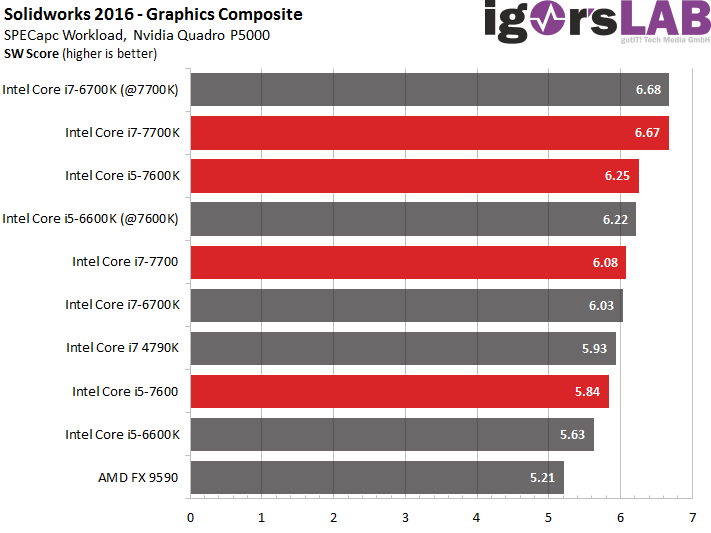
2016 AutoCAD
This software suite has long been a classic, which would also work well with any consumer graphics card – because instead of OpenGL, you now rely on DirectX for 3D graphics.
The 2D test also reveals any weaknesses in IPC performance, because since the introduction of the Unified Shader, graphics cards no longer have any special 2D units, and the hardware-based implementation of 2D graphics commands is also due to the driver model of the versions of Windows since Vista have been almost completely eliminated.
For example, many of the steps must first be calculated through the CPU before direct output can occur. The result is then also correspondingly
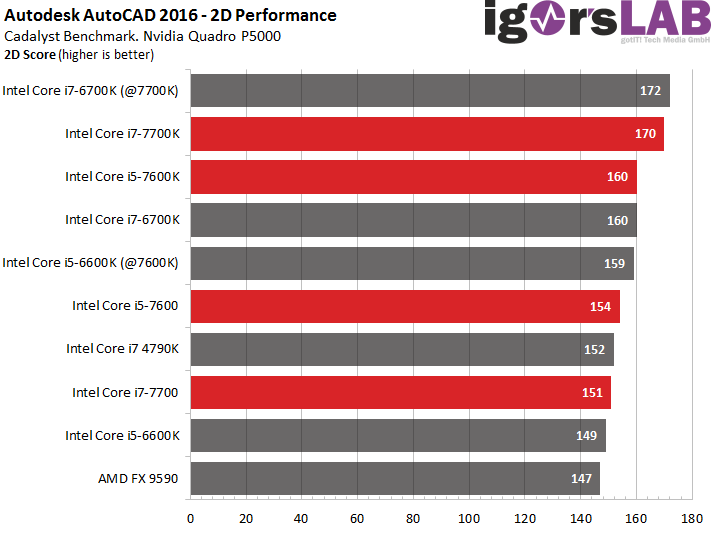
If kaby Lake and Skylake are still a little apart in 2D mode at the same time, you have a complete tie again in 3D mode. Multi-threading is not the core competence here either, but above all the high bar.
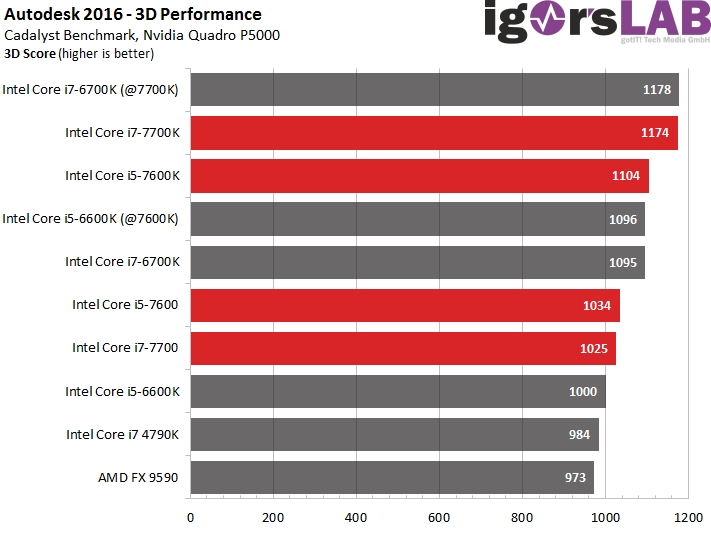
- 1 - Einleitung
- 2 - Z270, Optane, Overclocking-Tools und HD Graphics 630
- 3 - Test-Setup und Overclocking
- 4 - Benchmarks: Rendering und Office
- 5 - Benchmarks: Workstation-Anwendungen
- 6 - Benchmarks: DTP und Multimedia
- 7 - Benchmarks: Gaming und integrierte Grafik (iGP)
- 8 - Core i7-7700K: Leistungsaufnahme & Temperaturen
- 9 - Core i7-7700: Leistungsaufnahme & Temperaturen
- 10 - Core i5-7600K: Leistungsaufnahme & Temperaturen
- 11 - Core i5-7600: Leistungsaufnahme & Temperaturen
- 12 - Unterschiedliche Chipqualität und ihre Folgen
- 13 - Fazit

















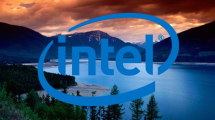














Kommentieren